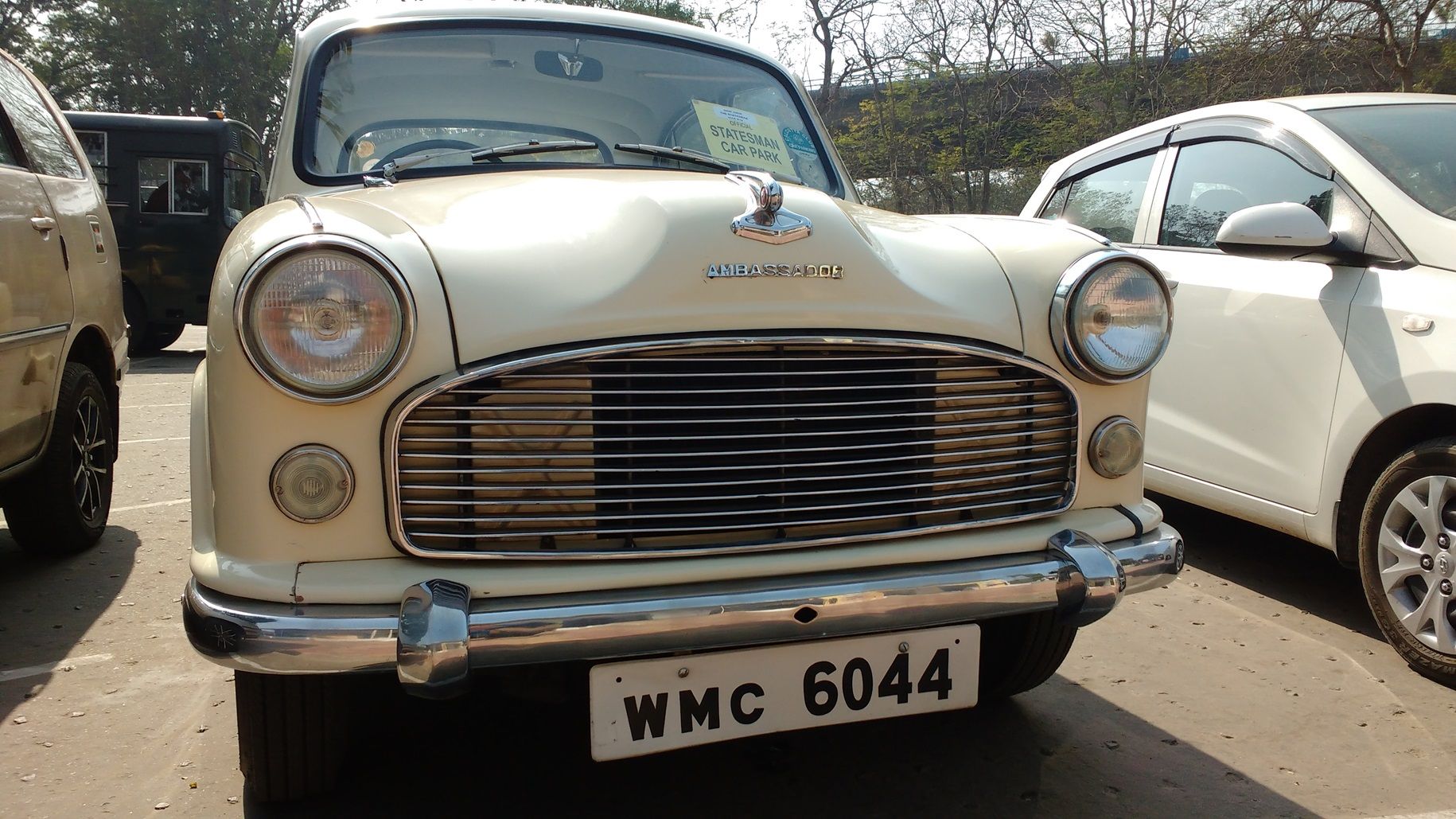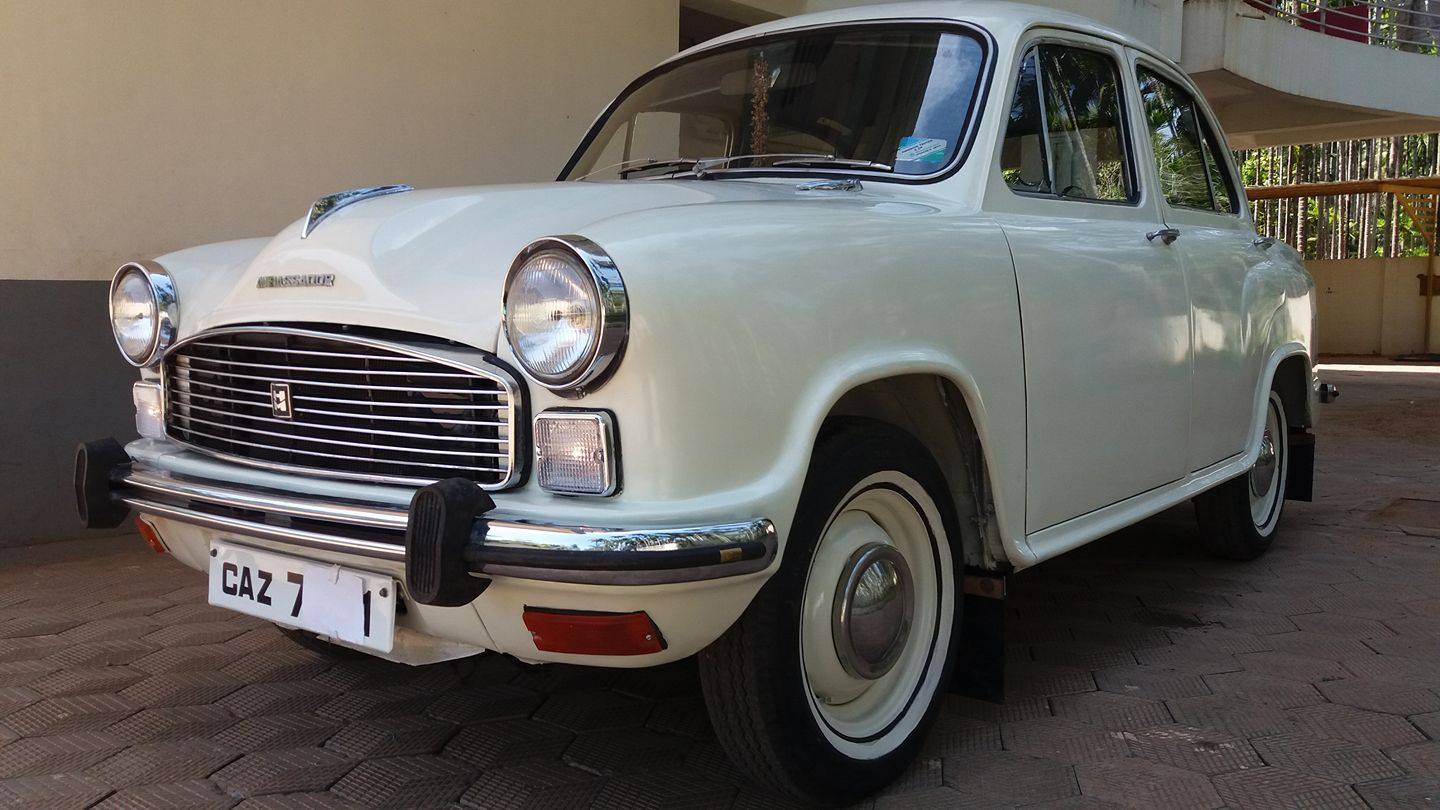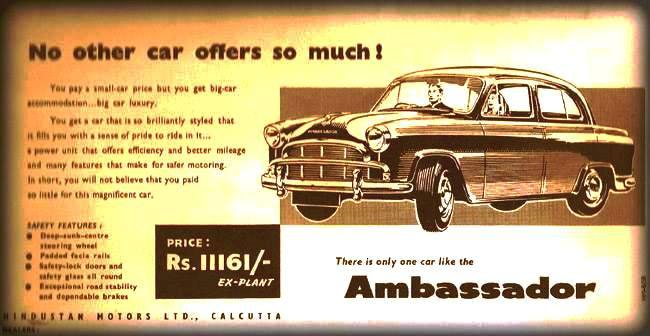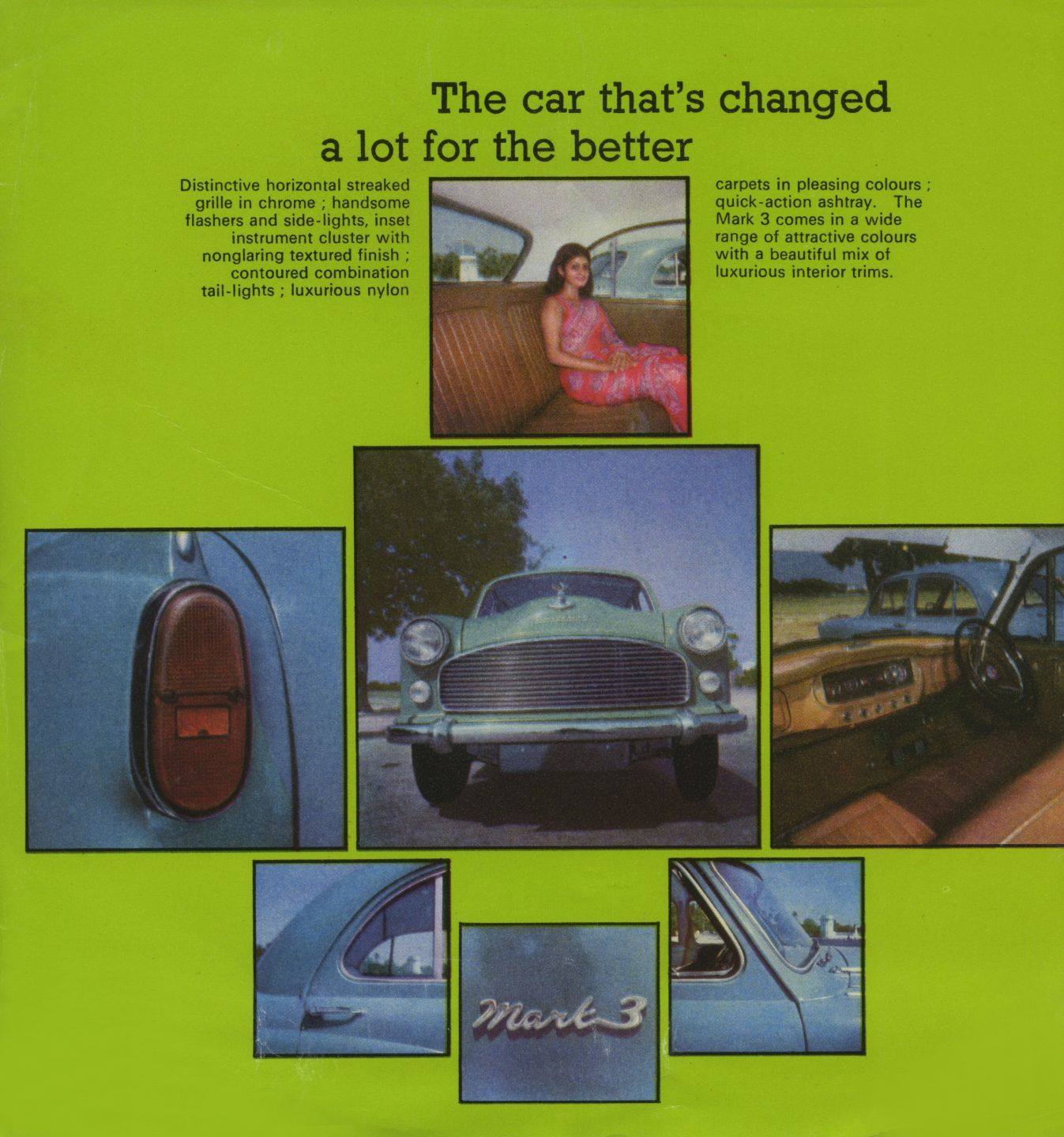Ambassador – India’s Most Illustrious Car (1958-2014)
Images Courtesy: Dr Anjan Chatterjee
When Hindustan Motors (HM) decided to discontinue the Landmaster by 1957, the choice fell upon the Morris Oxford (MO) Series III as its successor. Brij Mohan Birla, then Chairman, made this decision after its discontinuance by the British Motor Corporation (BMC) under whose umbrella, Morris Motors, UK, then operated.
Ambassadors continued with the 1476cc/40.5bhp side valve Morris engine till early 1959, getting swapped for the 1489cc/55bhp overhead valve BMC ‘B’ Series engine.

Ambassadors then had many ‘Made in England’ components. The chrome plating shine on these older cars has outlasted the car itself in many cases. By 1961, HM underwent its first phase of indigenisation, with the bumpers getting sharp edges and the upholstery getting treatment with the dual tone Rexine covers. Rusting on these bumpers was commonplace.

The Ambassador came with a semi-monococque chassis, was rugged and had lots of space inside and within its boot too. The engine was a real workhorse. The car withstood extreme weather and the not-so-good roads of the time. The thick steel sheets used added to the car’s tough DNA and Bill Jupp, a former employee of Pressed Steel, Cowley (UK), that built the panels for these cars says: “Now four cars can be built with the same amount of material.”
Sales-wise, the Morris Oxford Series III and IV (the station wagon variant) sold 58,117 units. Ambassadors were selling 30,000 to 40,000 units annually during their prime in the 1970s and 80s which petered down to just about 5,000 a year during its end phase.

The HM factory closed on 24 May 2014, proclaiming the Ambassador as the oldest surviving mass-produced car in the world and also the longest produced one from the same assembly line for 56 years.
Ambassadors with the BMC design continued till September 1963. By October 1963 the Mark 2 came along and was manufactured till May 1975. The Mark 3 was introduced by June 1975, and was replaced by the Mark 4 by February 1979.

By 1977 the Mark 3 - and later the Mark 4 - offered a BMC 1760cc engine option to facilitate air-conditioning but with tardy sales, the option was withdrawn by 1981. During the early 1980s an upmarket variant ‘Regent’ was launched but not many were sold.

Around 1987, an economy variant of the Mark 4 with almost no chrome work was also launched. Mark 4s were made till 1988, getting replaced by the short-lived model named ‘Deluxe’ which was in turn replaced by the Nova (1990) that had a new steering column with the Contessa’s steering wheel.

The ISZ 1800 with the 1817cc/75 bhp, Isuzu 4FC 1 engine was launched in 1992 as an option, while the diesel variant 2000 DSL with the 1995cc/55bhp engine was launched by 1997.
The Nova continued until the Classic was launched in 1998. The frugal workhorse 1489cc BMC diesel was improved upon in the late 1990s as Stride (Sturdy and Improved Diesel Engine). It was extremely popular in the tourism sector.

The Grand was launched in 2003, while its pricier variant ‘Avigo’ came along in 2005 but was discontinued by 2010. The 1.5 BMC diesel-powered models continued with the Classic badge until 2014. In 2013, the Ambassador Discovery ISZ 1800 (BS-IV) was introduced, featuring a sunroof, cable-operated boot and Avigo alloys.

The final popular model, Encore (BS-IV), was launched in September 2013 with much fanfare. It had an intercooler turbocharger fitted to the ageing BMC diesel for cleaner exhaust. A few thousand Encore taxis were sold. In Kolkata these will survive until 2029 owing to Apex Court directives.

Ambassador – the name evokes nostalgia for its many owners, well-wishers and Indian motorists in general. It conjures up feelings of the good old times when life was simpler and cars had spartan features with almost no bells and whistles.

For many, memories of the Ambassador range from the car their grandparents owned to the one they had their driving lessons in. During its 56-year model life Ambassador firmly etched its persona into the Indian mindset.
Among the many eminent Indians who owned Ambassadors are R.K. Laxman, the cartoonist, who always owned one in black, changing over to newer ones periodically. Showman Raj Kapoor owned a white Mark 4 (MAM 384) which was his last car.

Oscar awardee Satyajit Ray would detach the boot cover of his car, and sit in the cavernous boot to facilitate his camera jobs for films. Mohan Lal, the Malayalam film producer, director, actor and singer still owns his first car, a Mark 4 in the Dustexa shade (KCT 4455). It is proudly parked beside his Audi Q 7 and Mercedes S Class.

Celebrated journalist Khushwant Singh is famous for his line: “Every part of this car makes noises, but for the horn.”
Indira Gandhi, India’s Prime Minister, owned a Mark 3 (DHE 4477), which she bought in 1977. Jawaharlal Nehru, India’s first Prime Minister was gifted the first ever black Mark II in October 1963 by HM. The list is endless.
Sir Mark Tully, the former BBC correspondent in India has penned several articles about his unending love for the Ambassador. He quipped: “Ambassador has - her simplicity. Mechanics were ubiquitous because repairing an Ambassador didn’t require elaborate training or expensive equipment.”

The German Ambassador to India, Walter J. Lindner was proud of his official car, a flame-red Ambassador Grand. Beyond their use by the rich and famous, Ambassadors served various roles for government officials, tycoons, company executives and ordinary people (as taxis). They were used as goods carriers, ambulances (on the Hindustan drive-away chassis), hearse vans, and more. The original and pristine older Ambassadors attract considerable public attention during rallies and display events in our country.
Kerala tops India’s list of Ambassador fans with several hundred of them still preserved as family heirlooms. Tamil Nadu, Karnataka and Andhra Pradesh/Telangana also have trans-generational owners and fans of the car. However, Kolkata, once the Ambassador capital of India, has very few surviving, original models.

The late Lord Montagu (1926-2015), who participated in a vintage rally in Ahmedabad in 2002 in his 1909 Rolls-Royce Silver Ghost said at the time: “Ambassadors will one day participate in vintage rallies.” He called the car a “Road ki Rani” and said that one would soon join his collection of 300 cars in England. In 1998, HM underwent its ‘millennium modernisation’ with brand new panel dies as the older dies from 1957 had become deformed, affecting the fit and finish of the bodyline. Raghubir Singh’s book ‘A Way Into India’ finds mention of the Ambassador. “It is the solid part of that India that moves on, even as it falls apart, or lags behind."
Comments
Sign in or become a deRivaz & Ives member to join the conversation.
Just enter your email below to get a log in link.
